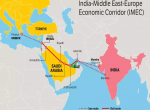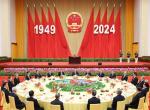Russia was the first country with which India established a strategic partnership in 2000 when Vladimir Putin became President and reversed the drift in ties under Boris Yeltsin when Moscow veered westwards and lost interest in its Soviet-era friendships.
The declaration of a strategic partnership with India was a pragmatic step, calculated to restore Russia’s role in international affairs by linking up with independent-minded, friendly, economically resurgent countries like India that could help promote multi-polarity and resist United States-led policies of regime change and intervention in the internal affairs of sovereign countries.
Since then, India has signed strategic partnership agreements with several countries, including the U.S. whose unilateralism was the motive for espousing multipolarity in the first place. The India-U.S. strategic partnership agreement shifts the balance in India’s foreign policy as its logic is both to deepen bilateral ties and build convergences in policies on regional and global issues. Because of the disparity of power between them, the U.S. has more capacity to influence India’s policies than the reverse, with the result that changes in India’s stance on some domestic and foreign issues is often attributed to U.S. influence, causing misgivings about India’s U.S. tilt.
Perceived westward tilt
If before 2000 it was Russia’s westward tilt that unsettled our bilateral relationship, it is now the perceived westward tilt of India that is causing some unease in Russian thinking.
To underline the claim that the India-Russia relationship is in fine fettle and distinguish it from India’s other strategic partnerships, the two countries declared last year that theirs was a “special and privileged” one. But such well meaning rhetoric does not match reality.
If the economic pillar of relationships is more important today than the political one, then the inability of India and Russia to build a strong bilateral economic relationship weakens the foundations of overall ties. At $10 billion currently, two-way trade, even with a 30 per cent increase over the previous year, is small, compared to $100 billion in economic exchanges with the U.S. and almost $73 billion of trade in goods with China. The target of $20 billion by 2015 appears optimistic. Many efforts at the government level to promote more business to business contacts have not galvanised the economic relationship because of the hangover of the state controlled trade arrangements of the past that blunt real entrepreneurship on both sides, the decline of the public sector in India and the state oriented structure of the Russian economy, and also because the most dynamic, technologically modernising sectors of our economy, especially knowledge-based, are west oriented. In this context, some agreements signed during the summit in IT and pharmaceutical sectors, as well as on satellite based navigation systems using GLONASS (the Russian GPS system), are encouraging.
In areas of obvious complementarities, as in the energy sector, achievements have remained modest despite several summit level discussions during the 12 years of strategic partnership. The joint statement issued at the end of the just concluded summit between Prime Minister Manmohan Singh and President Putin devotes considerable attention to the subject, with some indication of progress. We have, as before, reiterated our interest in equity participation in new projects in Siberia, Russia’s Far East and the Arctic shelf, as well as in discovered/producing assets and proposed LNG projects in Russia. In return, Russia has always pitched for a share in downstream activities in India, to which we are agreeable. The LNG deal between GAIL and the Gazprom group for long-term supply of 2.5 mmt mentioned in the joint statement is to be welcomed. We are looking to Russia to ease the tax liability on Indian investment in Imperial Energy which is making the project unremunerative.
As against this, the atmosphere for Russian investment in India has been soured by the problems Sistema has been facing in the telecom sector with its licences revoked by the Supreme Court’s 2G judgment, putting in jeopardy its multi-billion dollar investment that includes $700 million of Russian debt funds. The issue has got complicated because Sistema contends rightly that it acted within the policy framework and committed no wrongdoing and the Russian government seeks resolution through executive fiat and is unpersuaded that the government of India cannot disregard the Supreme Court judgment. Some amicable solution seems to have been explored as the issue does not figure in the joint statement, while India’s problem with Russian tax laws in connection with Imperial Energy does.
Disappointment
Russia’s disappointment with the delay in signing the agreement on Kudankulam 3 and 4, despite the attractive financial terms offered, is understandable. Having agreed to set up nuclear plants in defiance of U.S.-led international restrictions on civilian nuclear cooperation with India and supply nuclear fuel for Tarapur, the Russians are resentful that India wants to treat them and the Americans and the French alike with regard to our nuclear liability law, especially as the inter-governmental agreement pertaining to these reactors preceded our liability legislation. However, with Fukushima and the public agitation against Kudankulam 1 and 2, not to mention the Supreme Court’s involvement in the matter, the issue has become politically difficult for the government. The answer may lie in increased cost of Russian reactors to cater for liability exposure. If Russia explored a practical solution within the rules framed under our liability law that provides considerable scope for limiting the financial liability of the supplier, Kudankulam 3 and 4 could be signed and Russia would dramatically increase its head start over others in India’s nuclear sector.
Similarly, on defence contracts, the Russians are unhappy at the negative publicity over the inordinate delay in delivering the aircraft carrier, now slated for November 2013, even as the Government of India has been extremely accommodating over the delay. Russia retains its privileged position as the largest source of defence supplies to India, but gets upset when it loses some tenders. Because the India-Russia relationship is excessively defence weighted, such losses are felt all the more acutely. India has to manage Russian expectations even as it is obliged to diversify its sources of supply as part of building strategic ties with other partners. The answer lies in diversifying the India-Russia relationship and giving it strong non-defence legs. On the positive side, the two countries are engaged in joint projects such as the Fifth Generation Fighter Aircraft, Multi-Role Transport Aircraft and the BrahMos missile, while India has ordered an additional 12 MI-17v5 helicopters as well as technological kits for 42 additional Sukhoi 30-MKI aircraft. It is ironic that although India is the biggest user of Russian platforms which are used in exercises with the U.S. armed forces, military level contacts with the Russians, as compared to those with the U.S., are negligible. Beyond all this, it is a huge policy failure on our part that with so much access to advanced Russian equipment we have failed to establish an indigenous defence manufacturing base.
The joint statement has substantive paragraphs with positive formulations on several regional and global issues. Russia has expressed satisfaction with India’s cooperation as a non-permanent member of the U.N. Security Council and reiterated its strong support for its candidature for permanent membership. The formulation on terrorism is robust. Pakistan is not named, but the implication, including in the context of Afghanistan, is clear, easing doubts raised by Russia’s recent overtures to Pakistan. The Taliban is not named, but in the context of attempts to have a dialogue with it, both countries have recalled the redlines for this and have implicitly opposed the dilution of U.N. sanctions against the extremist elements.
The formulation on Syria reflects convergence in thinking on essentials, as also that on Iran where any military option is opposed. In the long paragraph on security in Asia, there is a call for inclusive regional security architecture. In the background of Chinese claims in South China Sea, the need for strengthening maritime security in accordance with the universally accepted principles of international law is stressed. The trilateral India-Russia-China mechanism gets a positive mention, with Russia conveying its support for India’s membership of SCO and APEC. The important role BRICS plays in a multi-polar order and collective decision making is noted. Both countries back a more representative and legitimate international financial architecture that includes an expeditious reform of the IMF.
Russia has extended support to India’s membership of the MTCR (Missile Technology Control Regime) and Wassenar Arrangement as well as the Nuclear Suppliers Group. The Australia Group is a notable omission. In the joint statement, India has “underscored its determination to actively contribute to international efforts at strengthening nuclear non-proliferation regime,” which, apart from the clumsy language, is unclear about what is implied.
All in all, despite a truncated visit consistent with Mr. Putin’s matter-of-fact, businesslike style, the 13th summit was timely in providing an opportunity to the two sides to underline a shared understanding on several important issues and address some vexatious ones creating ripples across the smooth surface of the bilateral relationship.
Published Date: 28th December 2012









Post new comment